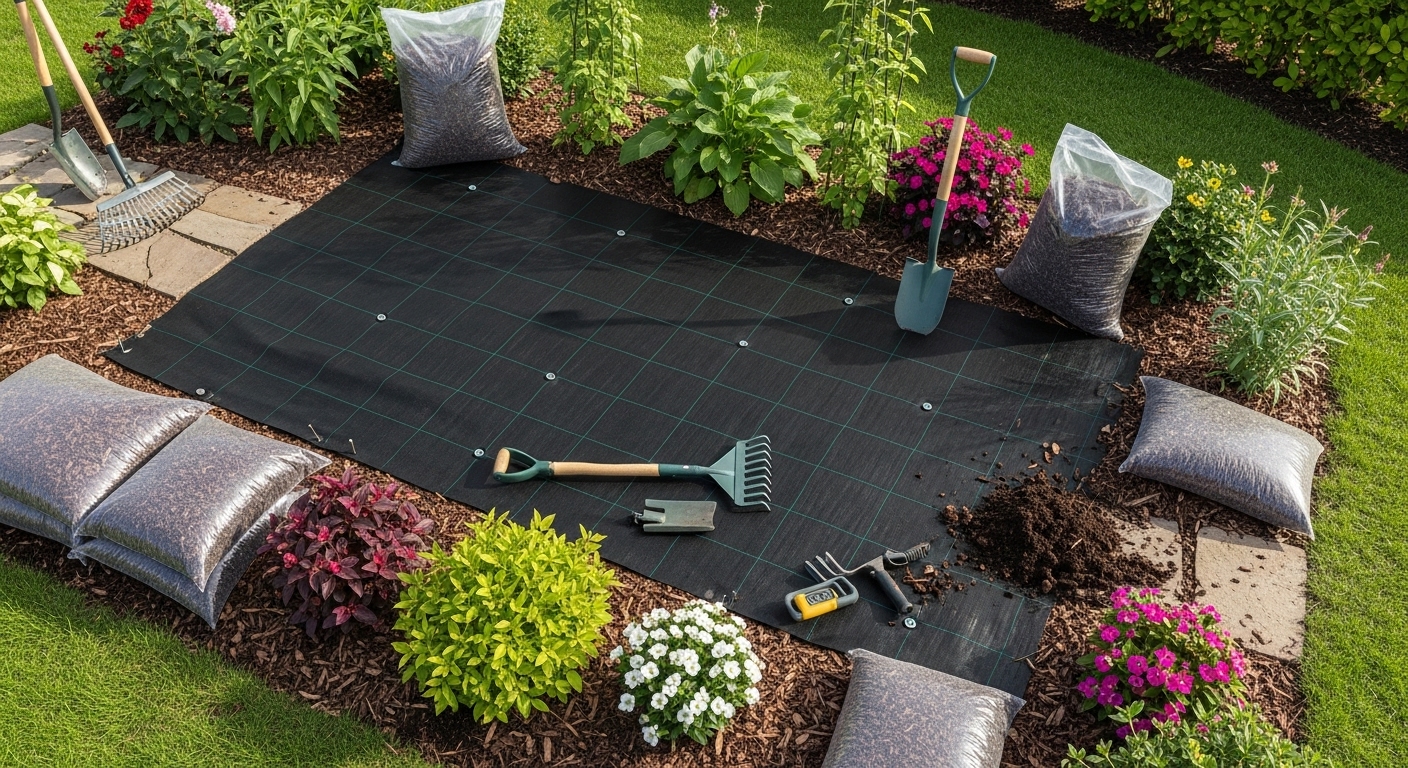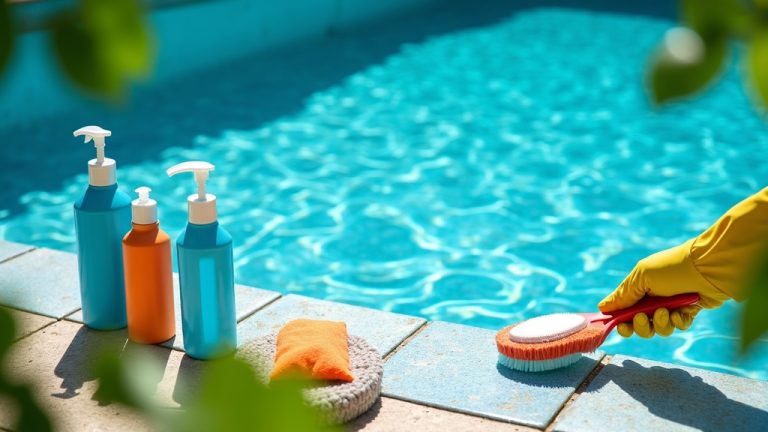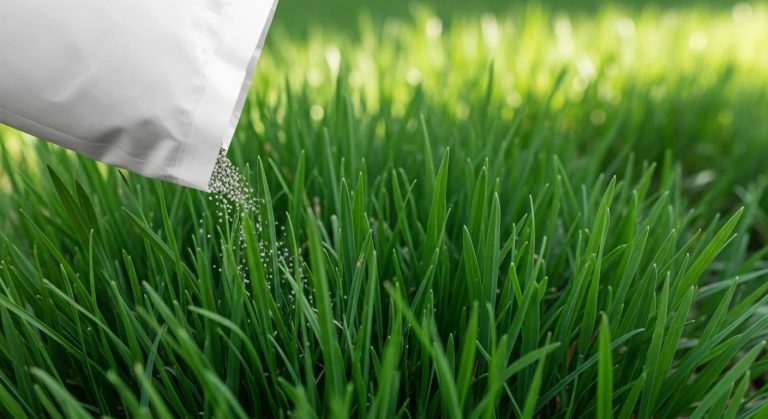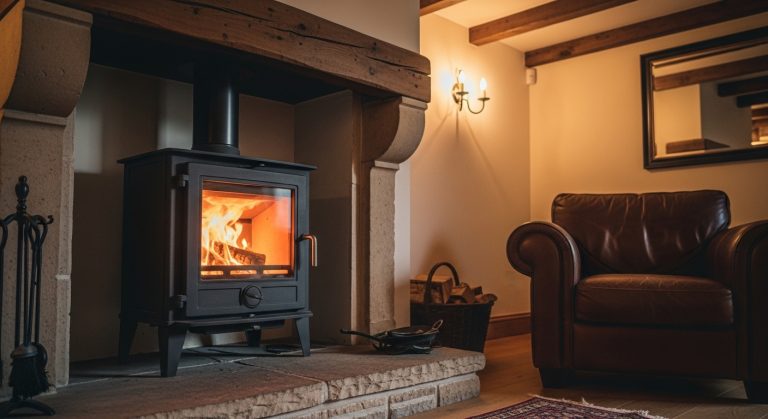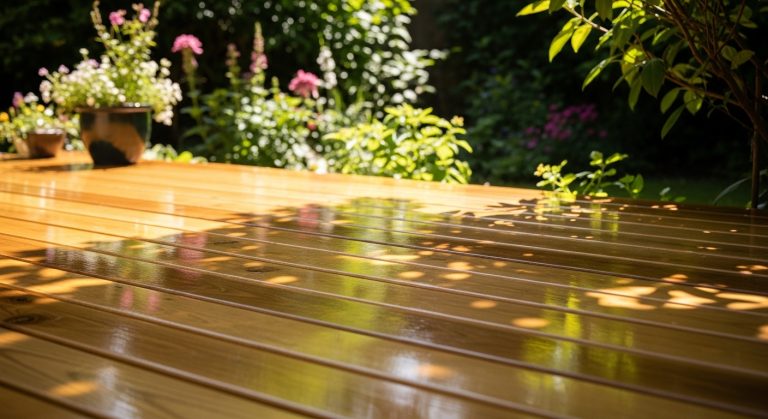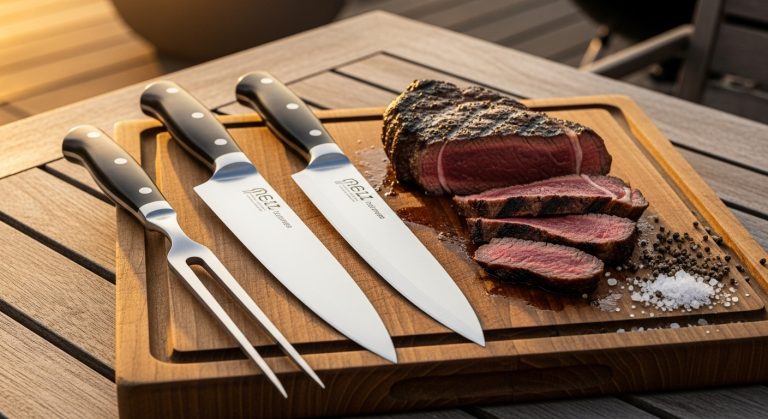Best Landscape Cloth: Complete Guide to Weed Barriers
Tired of battling stubborn weeds that keep ruining your beautiful garden? The best landscape cloth combines superior weed suppression with excellent water permeability, featuring durable polypropylene construction that blocks 95-98% of sunlight while allowing essential nutrients to reach your plants. This comprehensive guide reveals the top-performing landscape fabrics that will transform your gardening experience.
Whether you’re a weekend gardener or landscaping professional, choosing the right weed barrier can save you countless hours of maintenance. Discover which materials deliver lasting results and learn expert installation techniques that maximize effectiveness.
Key Takeaways
- Choose Polypropylene for Durability
Opt for landscape fabrics made from polypropylene, especially those with dual-layer construction, to ensure long-lasting weed suppression and optimal water permeability. - UV Treatment Extends Fabric Life
Select UV-treated fabrics or always cover untreated cloth with mulch or stone to prevent sunlight damage and prolong the effectiveness of your weed barrier. - Proper Installation is Crucial
Success depends more on thorough site preparation and secure anchoring than on brand. Remove all weeds, level the ground, and use pins or staples every few feet for best results. - Ideal for Permanent Plantings
Landscape cloth works best in perennial gardens, around trees and shrubs, and beneath gravel or stone paths—areas where you don’t need to disturb the soil often. - Balance Weed Control with Soil Health
While fabric blocks weeds efficiently, it can limit natural soil enrichment. Use organic mulch alone in areas where improving soil health is a top priority. - Maintenance Maximizes Performance
Regularly inspect for tears, repair damage promptly, and maintain a 2-3 inch mulch layer to protect the fabric and ensure ongoing weed control. - Apply Strategically for Best Results
Use landscape fabric in low-maintenance, permanent plantings and avoid it in vegetable beds or spots needing frequent replanting or soil amendments.
Landscape Cloth Materials
Woven vs Non-Woven Fabrics
Woven landscape fabrics feature interlaced polypropylene threads that create a strong, stable foundation. These materials excel in high-traffic areas like walkways and driveways. The tight weave pattern provides excellent structural integrity while maintaining moderate water permeability.
Non-woven fabrics use needle-punched or spun-bonded polypropylene fibers. This construction method creates superior water drainage and air circulation. Non-woven materials work exceptionally well in garden beds where plant health is the primary concern.
The choice between woven and non-woven depends on your specific application. Woven fabrics offer better longevity under heavy foot traffic, while non-woven options provide optimal growing conditions for plants.
Polypropylene Construction Benefits
Polypropylene stands as the gold standard for landscape fabric construction. This synthetic polymer resists chemical breakdown from soil acids and fertilizers. Unlike natural fibers, polypropylene won’t rot or decompose when exposed to moisture.
The material’s inherent flexibility allows easy cutting and shaping around existing plants. Most quality landscape cloths feature polypropylene weights ranging from 3.2 to 5.8 ounces per square yard. Heavier weights provide increased durability but may reduce water permeability.
Modern polypropylene fabrics often incorporate dual-layer construction. This design combines the strength of woven materials with the drainage benefits of non-woven layers.
UV Resistance and Treatment Options
UV treatment significantly extends landscape fabric lifespan when exposed to direct sunlight. Untreated polypropylene degrades rapidly under UV rays, becoming brittle and ineffective within months.
Quality UV-treated fabrics maintain structural integrity for multiple growing seasons. The treatment process involves adding UV-stabilizing compounds during manufacturing. These additives absorb harmful radiation before it can damage the polymer structure.
Some manufacturers offer fabrics with built-in UV protection, while others recommend covering untreated materials with mulch or decorative stone. The coverage method provides additional protection while enhancing visual appeal.
Top-Rated Landscape Cloth Options
ECOgardener Pro Garden Weed Barrier
ECOgardener Pro delivers exceptional performance through its innovative dual-layer construction. The combination of woven and needle-punched polypropylene creates a lightweight yet durable barrier. This design allows excellent water penetration while blocking virtually all weed growth.
The fabric features convenient green spacing lines that simplify plant installation. These guidelines help maintain proper plant spacing and create professional-looking garden layouts. The material cuts cleanly with standard scissors or utility knives.
Installation proves remarkably straightforward due to the fabric’s flexibility and manageable weight. The material conforms easily to irregular terrain and curves around existing landscape features. Multiple roll sizes accommodate various project scales.
Dewitt Non-Woven Professional Grade
Dewitt’s professional-grade fabric incorporates advanced UV treatment for extended outdoor exposure. The non-woven polypropylene construction provides superior water permeability compared to woven alternatives. This feature proves crucial for maintaining healthy soil moisture levels.
The fabric’s anti-fray edges eliminate the need for special cutting tools. Standard garden shears create clean, stable edges that won’t unravel during installation. The material’s thickness provides excellent puncture resistance while remaining easy to work with.
Professional landscapers frequently choose Dewitt fabrics for commercial installations. The consistent quality and reliable performance make it suitable for both residential gardens and large-scale projects.
Agfabric Eco-Friendly Solution
Agfabric emphasizes environmental responsibility without compromising performance. The polypropylene construction avoids harmful chemical treatments while maintaining effective weed suppression. This approach appeals to organic gardeners and environmentally conscious homeowners.
The fabric includes printed spacing guidelines that facilitate proper plant placement. These markings prove especially valuable when establishing new garden beds or replacing existing plantings. The clear visual guides reduce installation time and improve results.
Water penetration occurs at an optimal rate that prevents both drought stress and waterlogging. The balanced permeability supports healthy root development while maintaining effective weed control.
Amagabeli Heavy-Duty Performance
Amagabeli’s dual-layer design combines polypropylene and polyester for enhanced durability. This hybrid construction delivers superior tear resistance while maintaining excellent moisture permeability. The 5.8-ounce weight provides substantial protection against aggressive weeds.
The fabric’s high air permeability promotes healthy soil biology by allowing gas exchange. This feature prevents anaerobic conditions that can harm beneficial soil organisms. Root systems develop normally beneath the barrier.
Installation flexibility makes Amagabeli suitable for complex landscape designs. The material drapes smoothly over uneven surfaces and accommodates tight corners without bunching or tearing.
Installation Techniques and Best Practices
Site Preparation Essentials
Proper ground preparation determines landscape fabric success more than any other factor. Remove all existing vegetation, including roots and rhizomes that could penetrate the barrier. Hand-pulling works for small areas, while larger spaces may require mechanical removal.
Level the installation surface to prevent fabric stress and ensure uniform coverage. Fill low spots with quality soil and remove protruding rocks or debris. A smooth, even surface prevents premature wear and maintains consistent weed suppression.
Apply a pre-emergent herbicide if dealing with persistent weed problems. This additional step provides extra protection during the critical establishment period. Allow the herbicide to work according to manufacturer instructions before fabric installation.
Cutting and Shaping Methods
Sharp utility knives or heavy-duty scissors provide the cleanest cuts in landscape fabric. Avoid serrated blades that can create frayed edges prone to unraveling. Make cuts slightly larger than needed to allow for adjustments during installation.
Create plant openings using X-shaped cuts rather than circular holes. This method allows easy plant insertion while maintaining maximum fabric contact with the soil. Fold back the fabric flaps after planting to restore weed suppression.
Overlap fabric edges by at least 6 inches where multiple pieces meet. This overlap prevents weed emergence through gaps and ensures continuous coverage. Secure overlapped areas with additional stakes or pins.
Securing and Anchoring Systems
Landscape fabric pins provide the most reliable anchoring system for most installations. Use 6-inch pins spaced every 3-4 feet along fabric edges and every 6-8 feet across the surface. Drive pins flush with the fabric surface to prevent tripping hazards.
Staples work effectively in areas with soft soil conditions. Heavy-duty landscape staples penetrate easily and hold securely in most soil types. Avoid staples in rocky or compacted soils where penetration proves difficult.
Weighted edges using decorative stone or mulch provide both anchoring and aesthetic benefits. This method works particularly well along curved borders where pins might create an unnatural appearance.
Maintenance and Longevity Tips
Covering Options for Protection
Organic mulch provides excellent protection for landscape fabric while enhancing soil health. Wood chips, shredded bark, or compost create an attractive surface that blocks UV rays. Maintain a 2-3 inch mulch layer for optimal protection and weed suppression.
Decorative stone offers a low-maintenance covering option that lasts for years. River rock, pea gravel, or crushed stone provide permanent protection from UV damage. Stone coverings work especially well in xeriscape designs and contemporary landscapes.
Living ground covers can grow over landscape fabric in specific applications. Low-growing perennials with shallow root systems work best. This approach combines the benefits of fabric weed suppression with natural plant coverage.
Inspection and Repair Procedures
Regular inspections help identify potential problems before they become serious issues. Check for fabric tears, displaced pins, or areas where weeds have penetrated. Address problems immediately to prevent expansion.
Patch small tears using fabric repair tape or additional fabric pieces. Clean the damaged area and apply patches with generous overlap. Secure patches with additional pins to ensure proper adhesion.
Replace severely damaged sections rather than attempting extensive repairs. Remove the damaged fabric completely and install new material following proper preparation procedures. This approach ensures continued effectiveness.
Seasonal Care Requirements
Spring maintenance involves removing accumulated debris and checking pin security. Winter weather can displace pins or damage fabric edges. Replace any missing or loose pins before the growing season begins.
Fall preparation includes removing fallen leaves and organic debris that could decompose on the fabric surface. This material can create growing medium for weed seeds and reduce fabric effectiveness.
Winter protection may require additional mulch in areas with extreme temperature fluctuations. Extra covering prevents freeze-thaw damage that can stress fabric fibers and reduce longevity.
Troubleshooting Common Issues
Weed Breakthrough Solutions
Persistent weeds sometimes emerge through fabric openings or damaged areas. Address these problems immediately by enlarging the fabric opening and removing the entire weed, including roots. Repair or replace damaged fabric sections.
Aggressive perennial weeds like bindweed or Bermuda grass may require additional control measures. Apply targeted herbicide treatments to emerging weeds while protecting desirable plants. Consider upgrading to heavier-weight fabric in problem areas.
Seed germination on the fabric surface occurs when organic matter accumulates. Regular cleaning prevents this problem by removing potential growing medium. Maintain proper mulch coverage to block light from reaching any accumulated debris.
Drainage and Water Issues
Poor water penetration indicates fabric selection or installation problems. Test water permeability by pouring water on the fabric surface. If water pools or runs off, consider replacing with a more permeable material.
Excessive water retention can occur with very fine-textured fabrics in clay soils. This combination may require drainage improvements or fabric replacement with a more open weave material.
Uneven water distribution often results from improper installation over uneven surfaces. Re-grade problem areas and reinstall fabric with proper soil preparation.
Fabric Degradation Prevention
UV damage appears as fabric brittleness or color fading in exposed areas. Prevent this problem by maintaining adequate mulch or stone coverage. Replace exposed fabric sections before complete failure occurs.
Chemical damage from fertilizers or herbicides can weaken fabric fibers. Use appropriate application techniques that minimize direct contact with the fabric surface. Rinse fabric immediately if accidental contact occurs.
Physical damage from foot traffic or equipment requires immediate attention. Install stepping stones or pathways in high-traffic areas to protect the fabric. Mark fabric edges to prevent accidental damage during maintenance activities.
Frequently Asked Questions
How long does landscape fabric typically last?
Quality landscape fabric lasts 5-10 years when properly installed and maintained. UV-treated fabrics perform better in exposed locations, while untreated materials require mulch coverage for longevity.
The lifespan depends heavily on fabric quality, installation methods, and environmental conditions. Heavy-duty fabrics with proper covering often exceed expected lifespans, while cheaper materials may fail within 2-3 years.
Regular maintenance and prompt repairs significantly extend fabric life. Protecting the fabric from UV exposure and physical damage ensures maximum performance throughout its service life.
Can plants grow through landscape fabric?
Most plants cannot penetrate quality landscape fabric when properly installed. The tight weave or dense fiber construction blocks root growth while allowing water and nutrients to pass through.
Aggressive perennial weeds with strong root systems may occasionally break through damaged or low-quality fabric. Proper installation and maintenance prevent most breakthrough problems.
Intentional plant openings allow desired plants to grow while maintaining weed suppression around them. X-shaped cuts accommodate plant installation without compromising fabric integrity.
What’s the difference between landscape fabric and plastic sheeting?
Landscape fabric allows water and air penetration while plastic sheeting creates an impermeable barrier. This permeability difference significantly affects soil health and plant performance.
Plastic sheeting blocks all water infiltration, leading to surface runoff and potential drought stress for nearby plants. Fabric maintains soil moisture balance while providing effective weed control.
Durability also differs significantly between these materials. Quality landscape fabric withstands UV exposure and physical stress better than most plastic sheeting options.
Should I use landscape fabric under mulch?
Using fabric under organic mulch provides superior weed control compared to mulch alone. The combination blocks light more effectively while allowing beneficial water and air movement.
Fabric prevents mulch from mixing with soil, maintaining clean borders and reducing maintenance requirements. The barrier also extends mulch life by preventing decomposition into the soil.
Some gardeners prefer mulch-only approaches for areas where soil improvement is the primary goal. Fabric works best when long-term weed suppression takes priority over soil enhancement.
How do I remove old landscape fabric?
Remove all covering materials like mulch or stone before attempting fabric removal. Cut the fabric into manageable sections using sharp utility knives or heavy-duty scissors.
Pull up fabric sections carefully to avoid disturbing plant roots or soil structure. Remove all pins and staples to prevent future problems with cultivation or planting.
Dispose of old fabric responsibly according to local waste management guidelines. Most polypropylene fabrics are recyclable through specialized programs, though availability varies by location.
Transform Your Garden with the Right Choice
Selecting the best landscape cloth revolutionizes your gardening experience by eliminating tedious weeding while promoting healthy plant growth. Quality polypropylene fabrics with proper UV protection deliver years of reliable performance when installed correctly.
ECOgardener Pro and Dewitt professional-grade options lead the market for their superior construction and proven results. Investment in quality landscape fabric pays dividends through reduced maintenance and improved garden aesthetics.
Take action today and transform your outdoor space with professional-grade landscape fabric that delivers lasting weed control and enhanced garden beauty.

